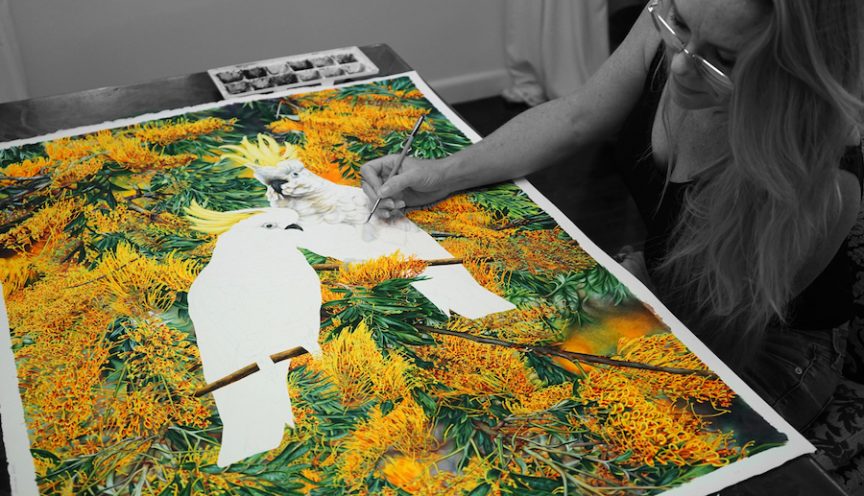Name: Heidi Willis
Which came first in your life, the science or the art?
It’s difficult to know what came first in the ‘science or art’ debate for me, as my work and the inspiration that drives it is such a natural, seamless coexistence in my world. Years on from where my work may have begun, my focus rests firmly on producing my best work in the moment, and the significance of sequence falls somewhat to irrelevance for me. What is relevant is that the science is a significant part of the creative work that I do, and the balance of art and science is one I never tire of.
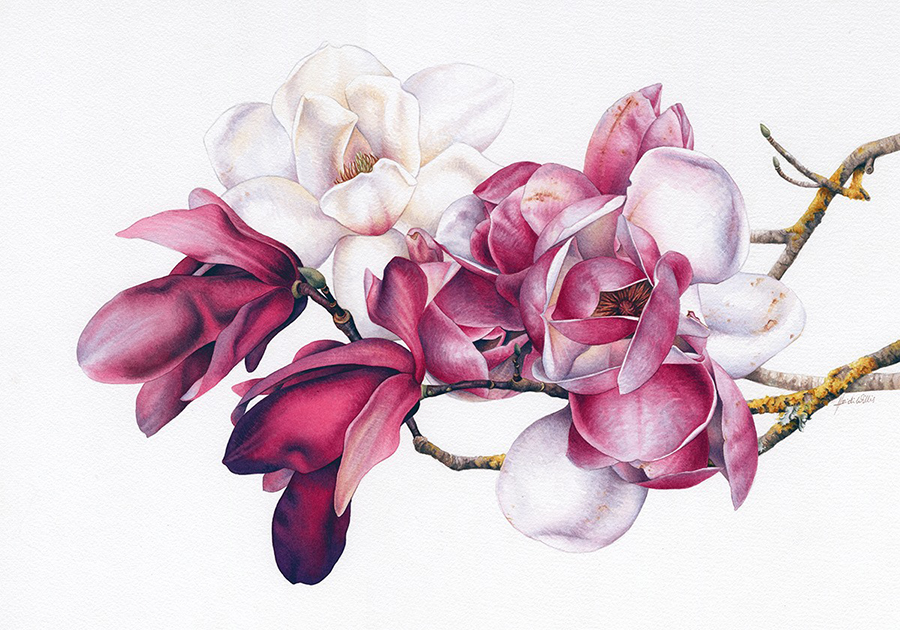
Magnolia Botanical
Natural History is an area of endless inspiration, fascination and challenge to explore as an artist. The science is a critical ingredient of my work that brings so much meaning, depth and dimension to everything I do. Reaching far beyond the limitations of spoken language, this work has the ability to communicate profoundly between our physical, emotional and mental awareness, making this an extremely unique and powerful tool for understanding.

Lotus and Morhens
Although I value fluidity and beauty of the art in my work first, scientific accuracy is my second consideration in this area. My botanical illustrations are far more rigid, both in science and art, than in my bird paintings, which are far more complex to create in general. Realistic bird paintings are intensely challenging work, with many considerations given beyond illustrating a singular subject. Considerations of host plants and animals, insects, and environments come into play. Habitats and species and relationships of all elements must be researched thoroughly, the science of this work. I seek to capture the character, personality and nature of my subjects, the life force and energy that takes you far beyond the structure and image related to the science, into a rich emotional exploration of my subject. It must inspire your heart and spirit, not just your mind to truly work for me.

Satin Bowerbirds and Magnolias
Then there are the artistic considerations of colour, form, compositional elements, size, and of course the rendering to negotiate as well. Though remaining scientifically accurate, I allow myself to be far more of an ‘artist’ with my bird painting than in my botanical work. With a distinct softening in my painting approaches to this work, I have a much stronger focus on developing a more ‘painterly’ result, particularly with the inclusion of backgrounds in these paintings. This range of approaches keeps me technically challenged as an artist, diverse in the work I produce and interested in the pursuit of excellence in this craft.
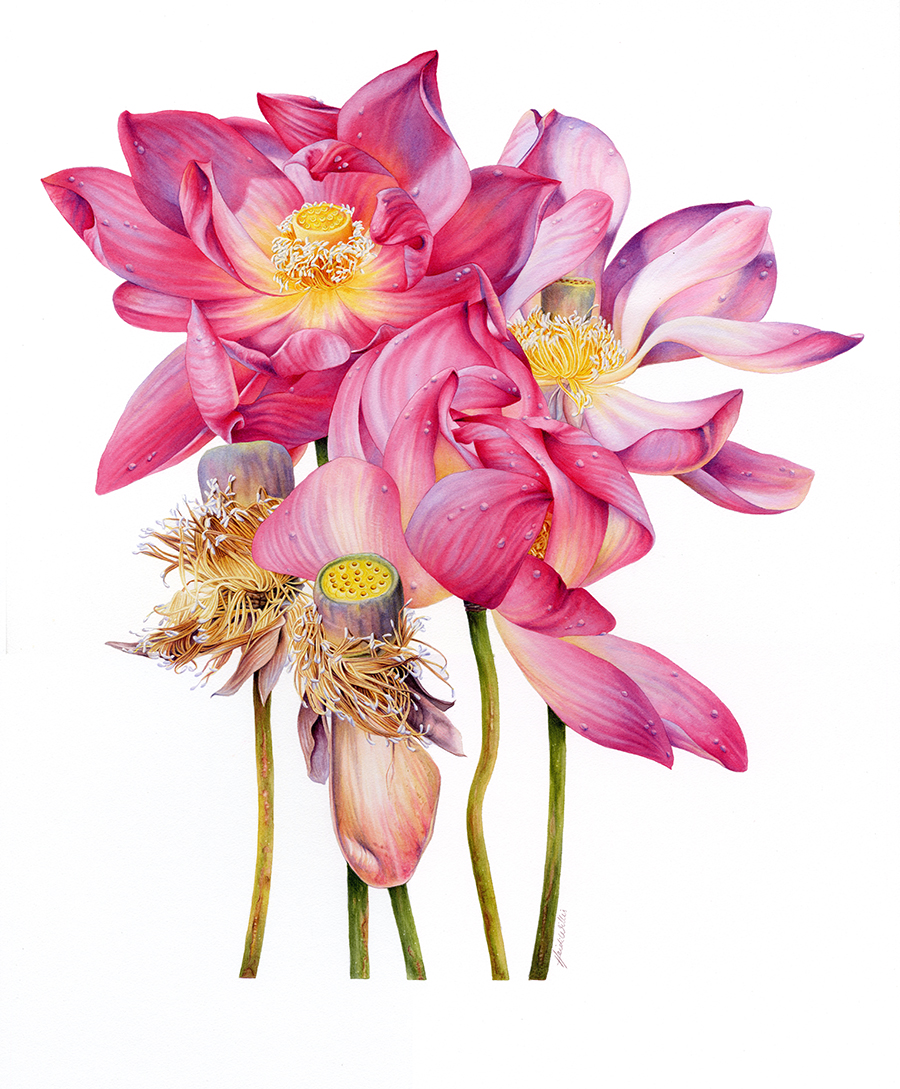
Sacred Lotus ~ Nelumbo nucifera
Which sciences relate to your art practice?
Within the fairly broad world of Natural History, my established areas of specialty are botany and ornithology with an occasional entomology adventure thrown in there too. Within this I move quite broadly along the scale of ‘science’ and ‘art’, producing everything from more rigid ‘full plate’ diagnostic botanical illustrations to scientifically accurate yet far more emotionally freer artworks of birds and their environments.
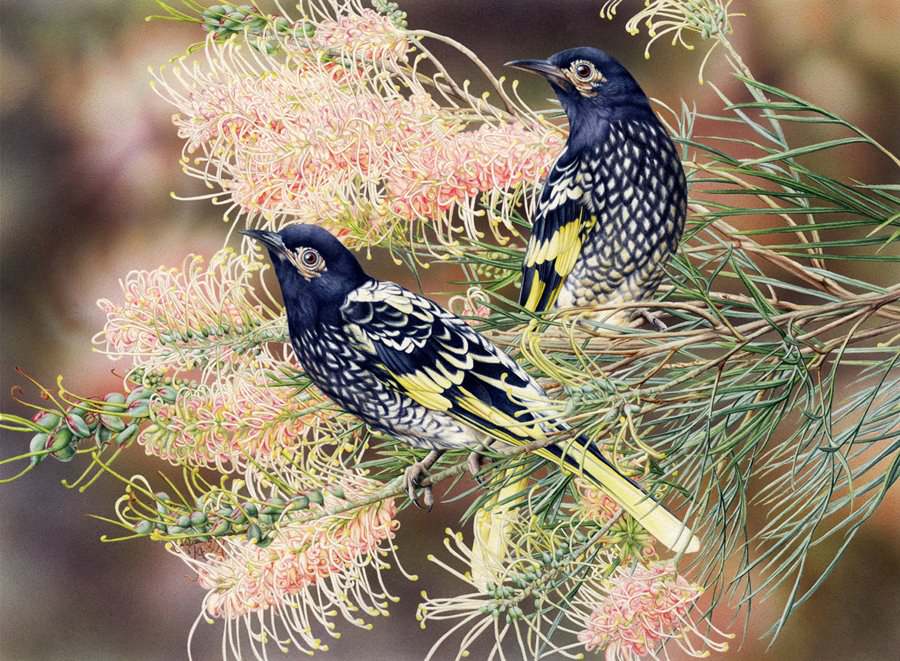
Regent Honeyeaters and Grevillea
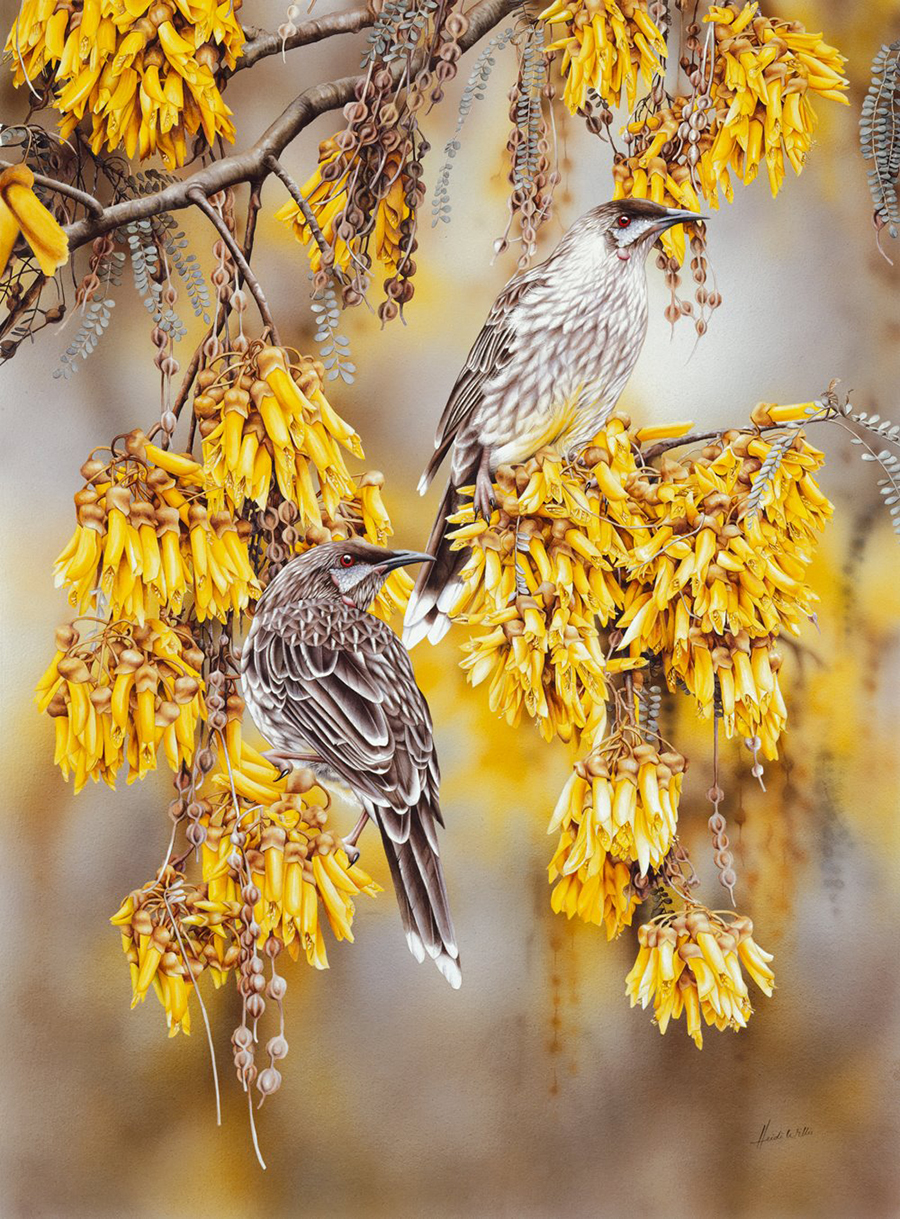
Wattlebird and Sophora Microphylla
What materials do you use to create your artworks?
I am a watercolourist. I work in transparent watercolour paints on watercolour paper.
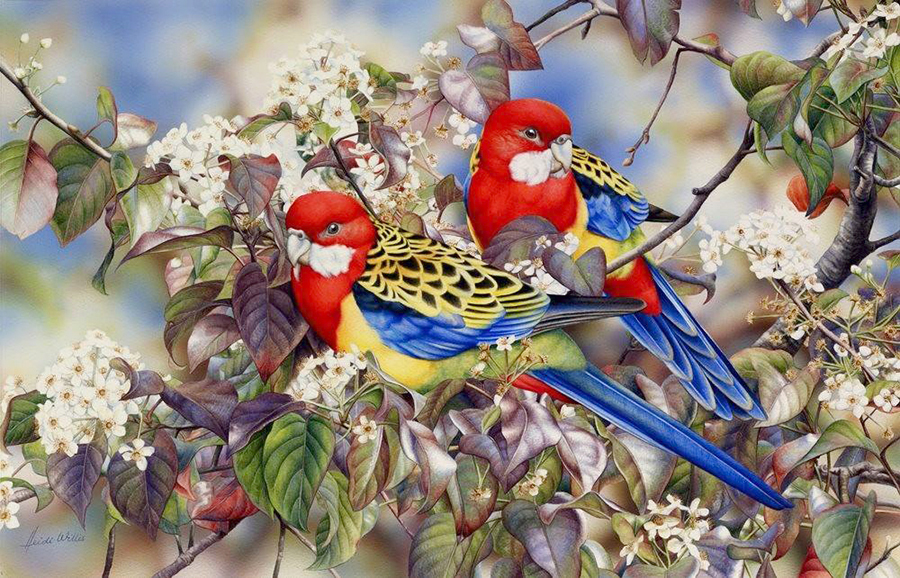
Eastern Rosellas
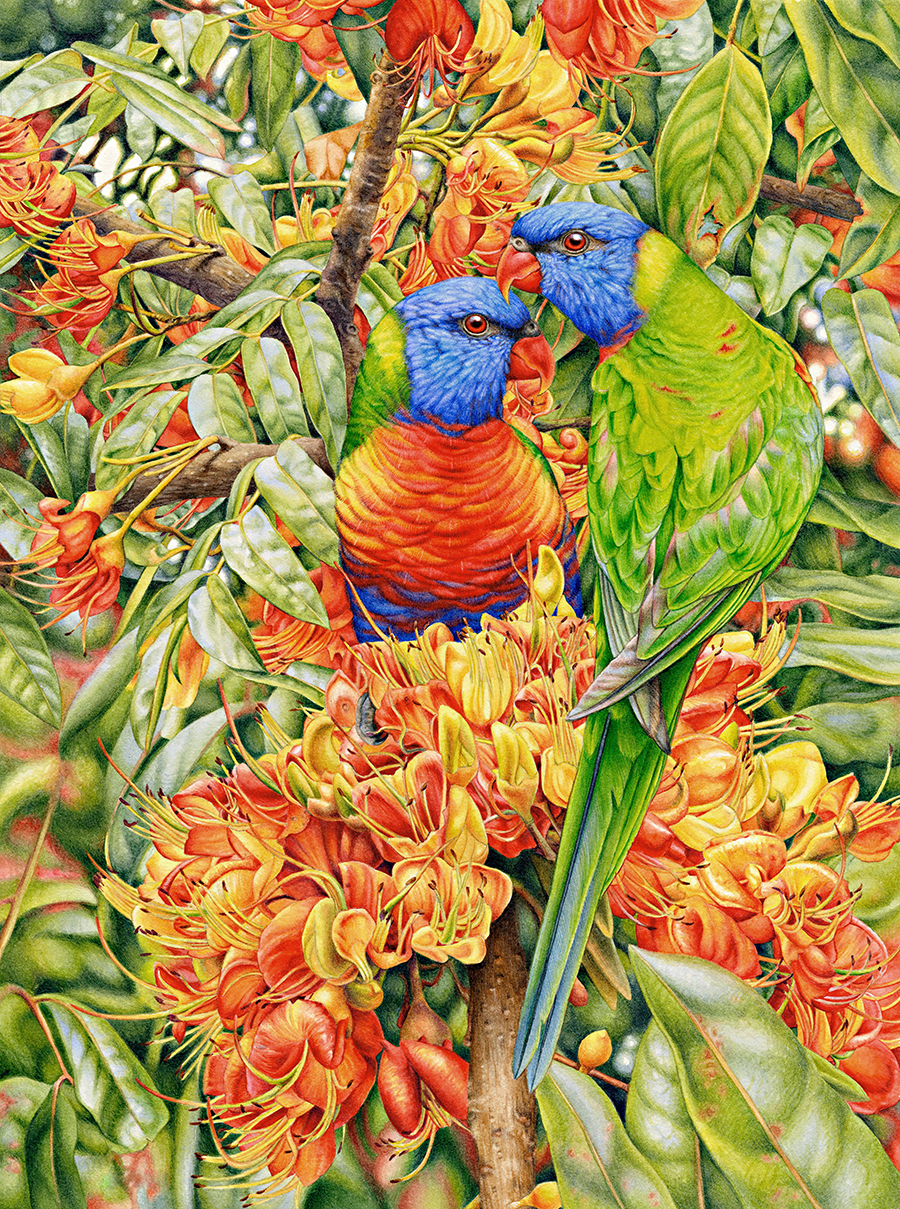
Rainbow Lorikeets and Blackbean
Artwork/Exhibition you are most proud of:
Every piece, large and small, has its own story and significance. Each is a stepping stone forward, a unique journey, and a little window into the world. My recent work is what I feel most proud of, pushing the boundaries of technical challenge, size and of subject. In particular my three recent major works, St Vincents Amazons and Cannonball Tree, and Black Cockatoos and Stenocarpus. Each explore different challenges, scientifically, creatively and physically. Each have been major, or as many say ‘epic’, undertakings and are especially significant pieces.
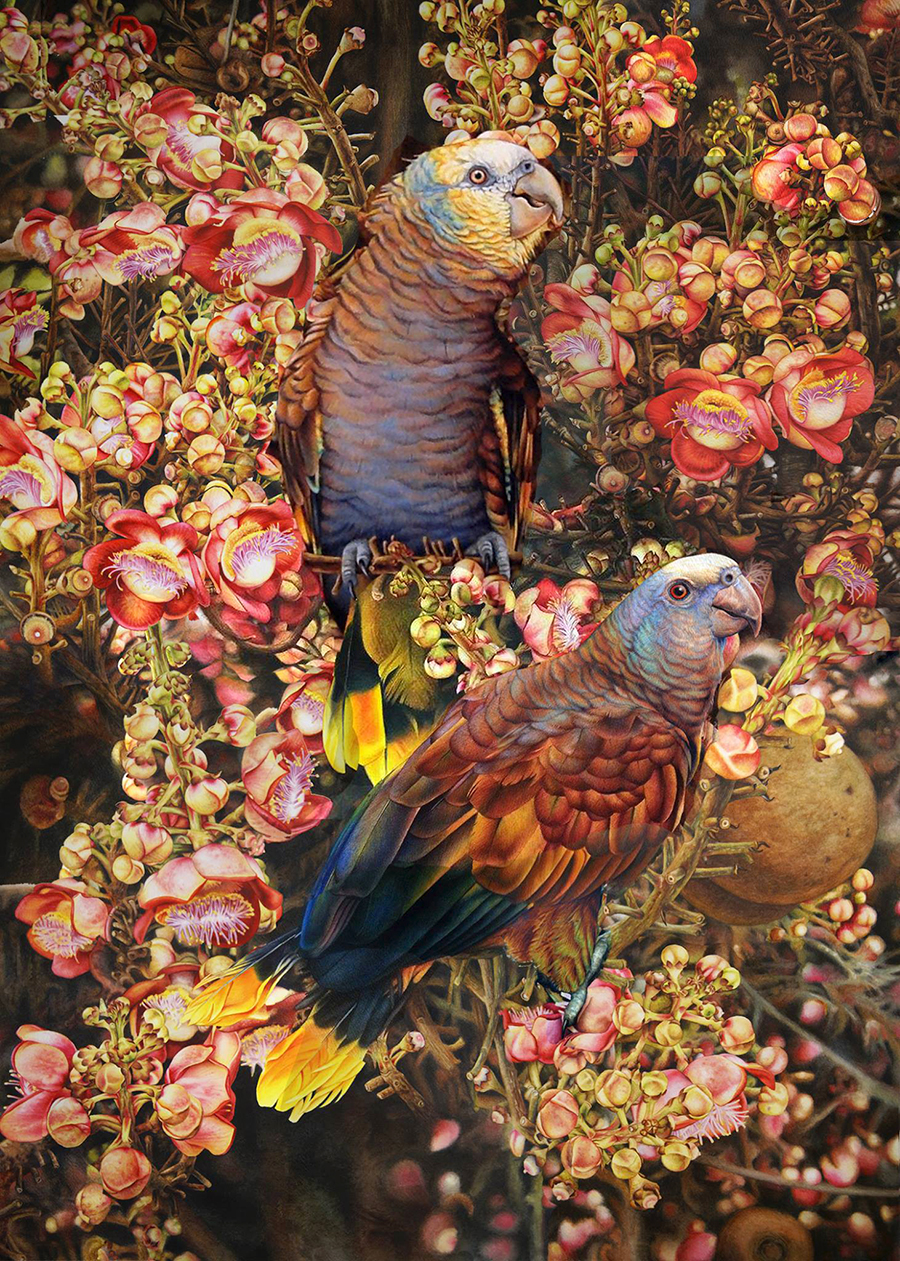
St Vincents Amazon Parrot and Cannonball Tree
The first, St Vincents Amazons and Cannonball Tree was an exploration of science, art and the sheer technical challenge of illustrating these insanely complex subjects at this level of detail and size. The St Vincents Parrots are one of the most beautiful, and unfortunately one of the rarest birds in the world. In this instance, getting the reference alone required me to call on 25 years of reputation and connections and months of effort, but I was able to acquire what was needed to capture this remarkable species and to create this incredibly significant piece… a true Natural History painting. It is currently a finalist and prize winner in the prestigious Waterhouse Natural Science Art Prize in the South Australian Museum and will continue on the National Tour in coming months.
A combination of bird painting and botanical illustration, Black Cockatoos and Stenocarpus was a challenging painting to triumph over just because of the size alone. For a watercolour painting, it is… HUGE. Added to the logistics and challenge of size is the complex detailing required to produce a realistic painting of these magnificent subjects. It was painting of extreme physical endurance and perseverance and of technical challenge.

Black Cockatoo and Stenocarpus
Artist Links: Facebook, Instagram
Share this Post

